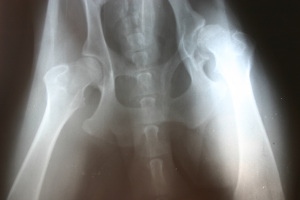Many Californians who suffered d ebilitating spinal cord injuries maintain the hope that scientific innovations will result in the possibility to recover from paralysis. But how realistic is such a cure? According to a recent article in The Independent, reports of medical breakthroughs often lack the results that most spinal cord injury victims hope for. Recent reports identified stem cell treatments and the possibility of transplanting regenerative cells into the spinal cord of those suffering from paralysis. Will these new studies make headway for people across the country who sustained severe spinal cord injuries?
ebilitating spinal cord injuries maintain the hope that scientific innovations will result in the possibility to recover from paralysis. But how realistic is such a cure? According to a recent article in The Independent, reports of medical breakthroughs often lack the results that most spinal cord injury victims hope for. Recent reports identified stem cell treatments and the possibility of transplanting regenerative cells into the spinal cord of those suffering from paralysis. Will these new studies make headway for people across the country who sustained severe spinal cord injuries?
New Treatment May Help Americans with Spinal Cord Injuries
Recently, Professor Geoffrey Raisman of University College London performed a cell transplant on a Bulgarian firefighter who previously suffered from paralysis. This “pioneering therapy” involved “transplanting regenerative cells from his nasal cavity into his spinal cord.” According to Raisman, the treatment “represents an historic change in the outlook for people disabled by spinal cord injury.”
At the same time, however, it is important to remember that this treatment only worked on one person, and it repaired an injury that “was a clean severance of the spinal cord in one location.” In other words, not all spinal cord injuries are created equal, so to speak. Indeed, many are much more complex.
And regaining the ability to walk may not be of utmost important to those who suffered spinal cord injuries. A spokesperson for the Spinal Injuries Association indicated that most people who suffered paralyzing injuries “would put control of the bladder, control of the bowel, and sexual function above actually being able to stand and walk around.” As such, while breakthroughs in treating spinal cord injuries could be big news for Americans who currently are paralyzed, researchers and surgeons have been taking the news of the recent spinal cord treatment success with cautious optimism.
Spinal Cord Injury Statistics: Who is At Risk?
According to the Mayo Clinic, spinal cord injuries can vary drastically in type and severity. In general, a spinal cord injury involves “damage to any part of the spinal cord or nerves at the end of the spinal canal.” These injuries usually result in severe and permanent changes to a person’s “strength, sensation, and other body functions below the site of the injury.”
Who is at greatest risk? While spinal cord injuries typically result from unexpected accidents, certain groups of people are at greater risk than others. The Mayo Clinic identifies some of those at greatest risk of suffering a spinal cord injury:
- Males are disproportionately affected by spinal cord injuries, making up about 80 percent of reported cases in the United States;
- Young persons ages 16 to 30 are most likely to suffer a serious spinal cord injury;
- After young adults, the elderly, those over the age of 65 are most likely to sustain a spinal cord injury in a dangerous fall;
- Those who take part in risky activities, for instance, playing contact sports without protective gear, riding a motorcycle without a helmet, or diving into shallow water, are more susceptible to life-altering spinal cord injury.
Have you sustained a serious spinal cord injury? In many cases, the accident that led to the injury was preventable. You may qualify for financial compensation, and you should contact an experienced San Diego spinal cord injury attorney to discuss your case.
Photo Credit: xandert via morgueFile
See Related Blog Posts:
 North County San Diego Injury Lawyers
North County San Diego Injury Lawyers








